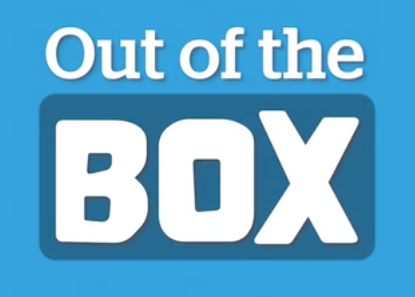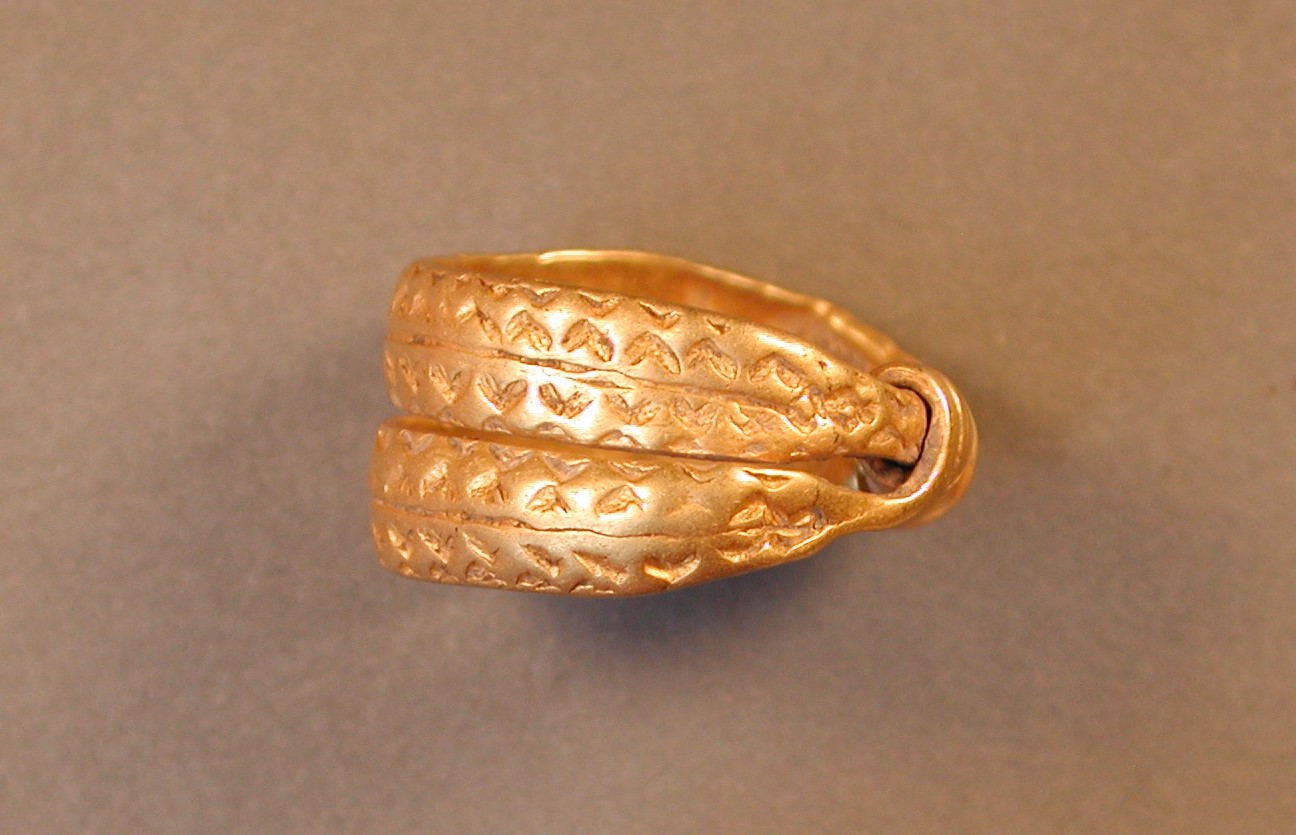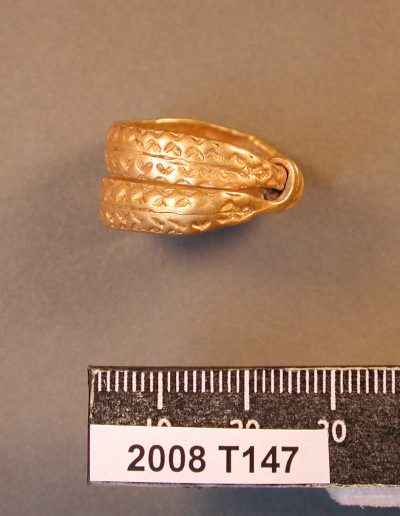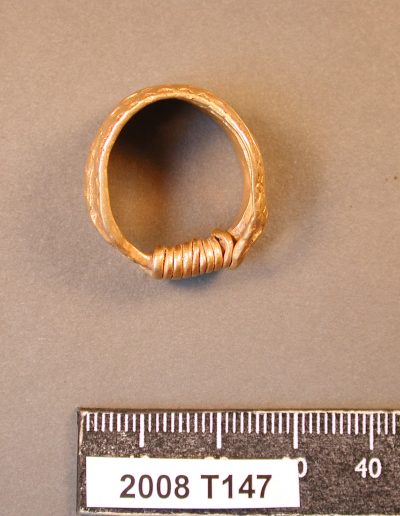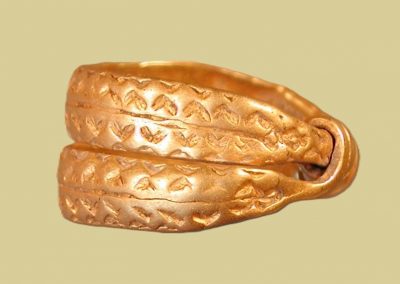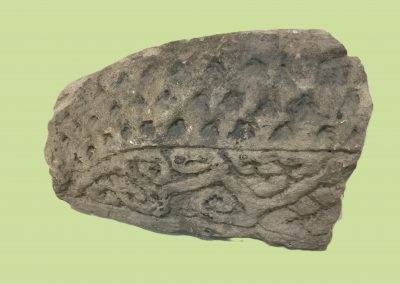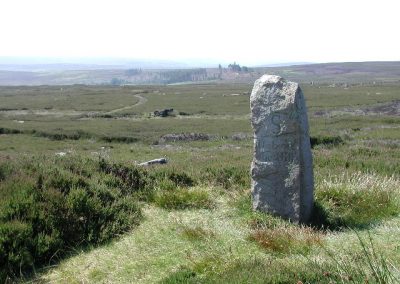Viking Gold Ring
Dales Countryside Museum, Hawes
This gold ring was found on a farm near Sedbergh. Jewellery was popular with the Vikings and is occasionally unearthed by archaeologists and metal detectorists. But this ring was found by a farmer, Mr Airy, whilst clearing out a blocked drainage ditch. At first glance, he assumed the glinting material was probably an item of litter – but luckily, he went back to take a closer look. The ring is officially classed as ‘treasure’ as defined by the ‘Treasure Act’.
It’s likely that this ring was originally worn by a Viking male of high status, probably during the 9th or 10th century.
A complicated design
The Vikings were skilled at creating detailed patterns and shapes.
This ring is made from two separate bands which have been fixed together. Their ends have been drawn into wires at the back and then wound tightly around the back of the bands.
Both bands are decorated with a punched design. Geometric-style patterns like this seem to have been popular for Viking jewellery. They create an interesting design, but may have had other, more symbolic meanings too. This ring is 2.4cm in the diameter and the design is 1.3cm high at the front.
What’s it made of?
Vikings used a variety of metals to craft their jewellery, including gold, silver, bronze, and iron. Tests carried out at the British Museum indicate that this ring’s composition is approximately 83-86% gold, as well as 11-14% silver, and 2-4% copper.
This means that the ring is made from 20 carat gold and would have been considered very valuable. The presence of the silver and copper would have given the ring more strength than 24 carat gold, an important practical consideration.
For centuries, fashion items have been used as a marker of social class and this ring may well be a good example of this.
Talking Points
Can you tell that the ring is very old? If so, how?
Do you like the design of the ring? How would you describe it?
Do you think this ring would have taken much skill to produce? Why / why not?
In Viking times, men were as likely to wear rings as women. Why do you think fewer men on average wear rings today?
If you saw this ring in a shop today, would you think the design looks like it’s intended for a man, a woman or both (gender-neutral design). Why?
Some fashions change a lot with time, whilst others change less. Do you think this ring would seem fashionable if worn today?
What do you think is most important when choosing jewellery – the quality of the metal, the quality of the design, or something else? What are the reasons that people wear jewellery today?
Have you ever lost an expensive object? How did you feel?
Vocabulary
Gender-neutral design: design features that are not associated with either men or women
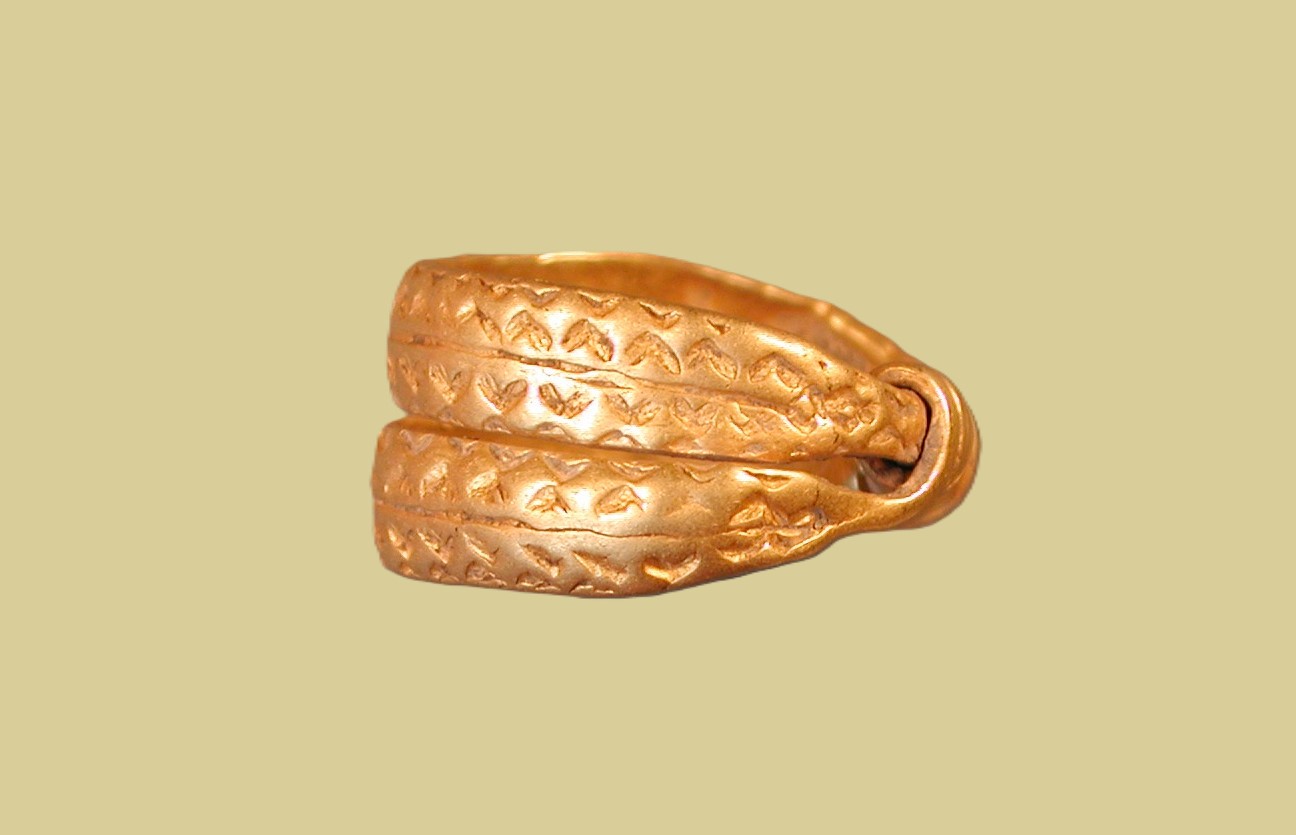
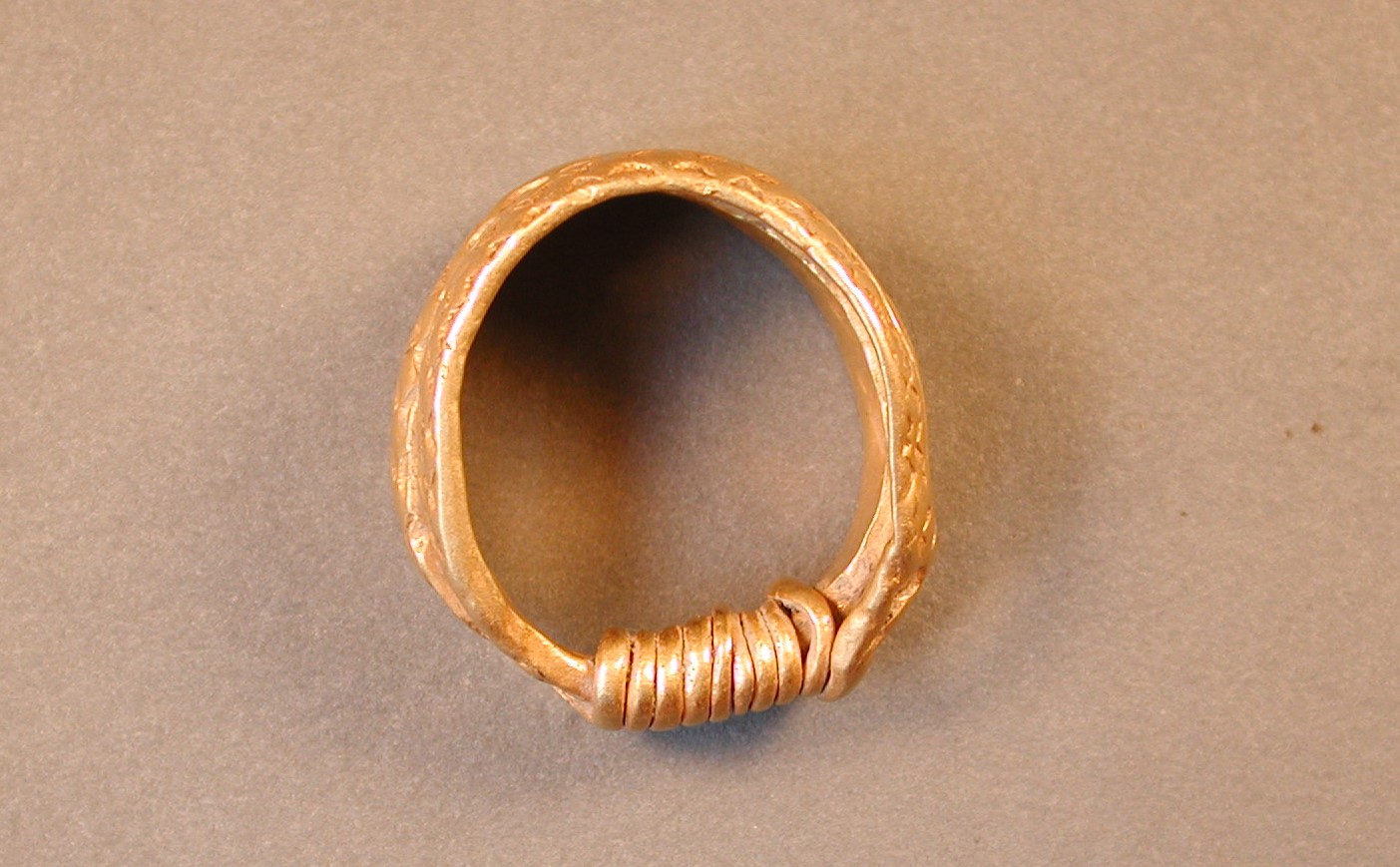
In the Classroom
There are lots of ways you could explore this ring, whether with younger students learning about the Vikings, or older students discovering more about body image, gender attitudes or fashion.
Create your Own
Younger children can take inspiration from this Viking ring to have a go at designing their own Viking-style brooch using resources from the Dales Countryside Museum. Watch the video on their website to find out how.
Make a Mood Board
Nowadays, many fashion designers use mood boards to brainstorm and organise ideas. What might a mood board for this ring look like today?
Hotseat
Interview a student in role as the owner of this lost ring. How did they lose it and how are they feeling? Try to get them to give a detailed description of the ring so that their friends can look out for it. What special design features could they mention?
Role play
Role play the conversation that took place between the jewellery designer and the customer on the day this ring was made. Why is this design superior to other potential ring designs?
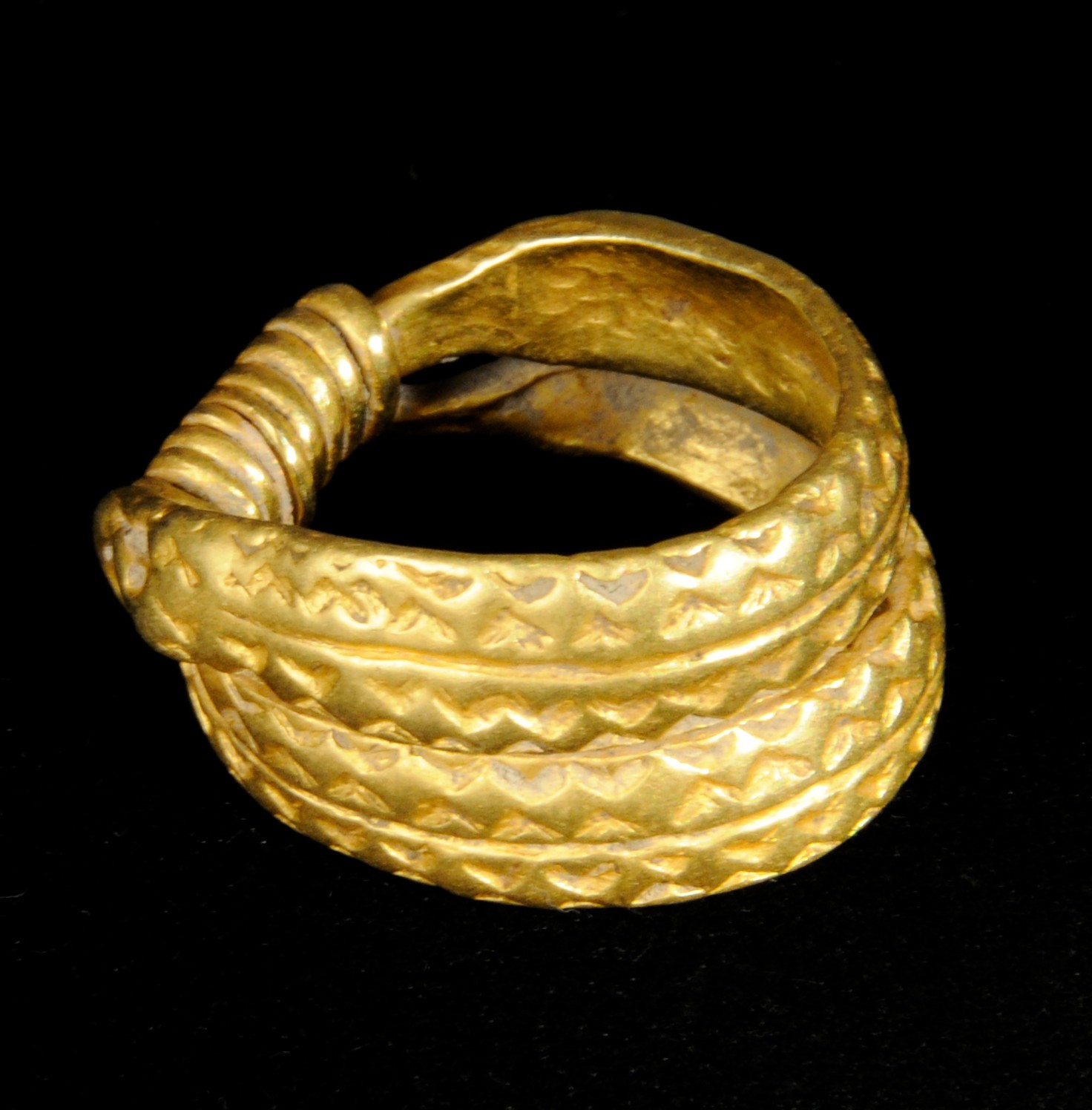
Hands on History
The Dales Countryside Museum has a popular programme of workshops for schools, including an ‘Invaders and Settlers’ session.
You can also borrow a loan box of objects to explore Viking life. Find out more.
